Legendary creator of female combat air regiments
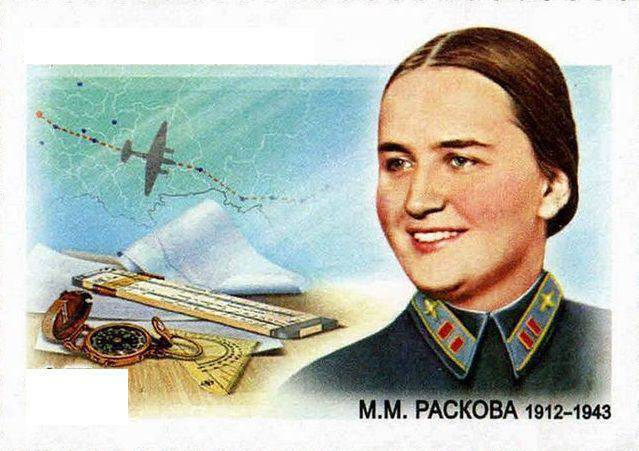
Woman in tunic with blue aviation buttonholes, a friendly, open smile - the Soviet people remembered Hero of the Soviet Union Marina Raskova. Clever, well-read, passionately passionate about music, she was a strong-willed, purposeful person, a brave pilot. Her life, and legends are made up about her, Marina devoted entirely to aviation.
Marina Mikhailovna was born in Moscow in the family of a teacher. In 1932, she got a job as a draftsman at the Air Force Academy. Soon, Marina became a laboratory assistant at the Department of Air Navigation, here she became interested in the specialty of an aviation navigator. Raskova began to learn to make navigational calculations and to study the theory of air navigation. Study flights in 1933 predetermined the future life and fate of Marina Raskova. She decided to become a navigator. While working at the academy, Marina independently studied air navigation and in 1934 at the Central Training Plant of the Civil Air fleet passed an external examination test for the title of navigator. After this, Raskova was appointed instructor-lab of the air navigation laboratory and she began to teach students of the Academy navigational affairs. It was a great honor for a young woman aviator. At the same time, combining with the main work, she graduated from the school of pilots of the Central Aero Club of Osoaviahim and very well flew in light sports aircraft.
As a navigator, Raskova made several long-distance non-stop flights, visited expeditions to lay new air routes, made complex and responsible navigation calculations for conducting air parades in the skies of Moscow, in which Marina Mikhaylovna herself participated in several times. In the 1937 year, with a pilot, Valentina Grizodubova, she flew along the Moscow-Aktyubinsk 1443 kilometer and set a new female world record for flying distance in a straight line. V. Grizodubova and M. Raskova beat the international record of flying direct American pilots who flew about 800 kilometers.
In 1938, M. Raskova, P. Osipenko and V. Lomako set a record for flying distance on a seaplane on the route Sevastopol - Arkhangelsk. A straight line covered the distance 2241 km. The result of this period of Raskova’s life was the heroic non-stop flight on the Moscow-Far East route in the fall of 1938, performed jointly with V. Grizodubova and P. Osipenko on a twin-engine Rodina plane. In 26 hours and 29 minutes, Rodina traveled 6450 kilometers. This feat was highly appreciated by our people and the government of the country. By decree of the Presidium of the Supreme Soviet of the USSR 2 in November 1938 of the year to the brave pilots V.S. Grizodubova, PD Osipenko, M.M. Raskovoy, the first of the women of the country, was awarded the title Hero of the Soviet Union.
In the difficult days for the Motherland of the autumn of 1941, when the enemy rushed to the capital, the organization of three women's air regiments began. These aviation units were formed from the composition of the girls pilots of the Civil Air Fleet and Osoaviahima. But for the maintenance of aircraft required technical composition. The Central Committee of the Komsomol mobilized the girls Komsomol girls from enterprises and students, who joined the ranks of these regiments. The creation of women's aviation regiments had no analogues in stories.
The task was complex and completely new. It was necessary to prepare a fighter air regiment armed with the best Yak-1 fighters in our aviation, as well as air regiment of night bombers on light U-2 aircraft and a regiment of bombers armed with the Pe-2, the newest for the war years. Civilian pilots needed to be trained in flying combat planes and fighting, and the other girls needed to be serviced by aircraft. It was necessary to teach, to own all weapons. It was necessary to teach the girls, future navigators, to create a route, find a target and precisely strike a bomb strike at it, fire at aerial targets and repel enemy attacks in the air. Of course, in the short time that they were allowed to prepare new aviation regiments, it was possible to provide only the basics of military knowledge. Further experience of the struggle was learned by the girls already at the front.
The formation of these aviation regiments was entrusted to the famous Soviet navigator, Hero of the Soviet Union, MM. Raskovoy. She was quickly adjusted to study girls and training flights on training aircraft, and then in combat. She knew how to do everything with a twinkle, and infected others with her activity. Her beautiful face, the clever look of gray eyes, the affable smile were inviting. She often told the girls how she herself wanted to fly to the front in the very first days of the outbreak of war and beat the hated enemy. But the command entrusted her with organizing women's air regiments, because thousands of girls, and among them many pilots, sought to go to the front and wanted to defend their homeland. We had to help them with this. The command of the regiments was selected from the regular female officers who were appointed to the posts of commissars, engineers, navigators of the units. But they were very few.
 Most volunteer girls first put on their uniforms. Of course, they did not immediately become military, they did not immediately become accustomed to the precise routine of the military unit. But the great desire of the girls to become real military at the front helped them. And from day to day they received fewer comments. Raskova was very concerned about the health, nutrition and uniforms of the girls. She got everything needed for the regiments: from linen to aircraft. She flew to Moscow, to Kuibyshev and other cities, watched how things were going with supplies. Marina Mikhailovna was a good speaker. She spoke hotly and brightly, never read "on a piece of paper." She told the girls: “We must continue the glorious traditions of the Russian female warrior. There are no barriers for us and the conventions that prevented Nadezhda Durova from fully showing courage and heroism. Everything is given to us: the right to defend the Motherland, and the formidable weapon are combat aircraft. Well, can we live up to the hopes that the Motherland lays on us? ”“ Justify! ”The girls unanimously answered her. “And I’m sure of it!” - summed up Raskova. The girls loved Marina Mikhailovna, they believed in her and boldly, without hesitation, followed her.
Most volunteer girls first put on their uniforms. Of course, they did not immediately become military, they did not immediately become accustomed to the precise routine of the military unit. But the great desire of the girls to become real military at the front helped them. And from day to day they received fewer comments. Raskova was very concerned about the health, nutrition and uniforms of the girls. She got everything needed for the regiments: from linen to aircraft. She flew to Moscow, to Kuibyshev and other cities, watched how things were going with supplies. Marina Mikhailovna was a good speaker. She spoke hotly and brightly, never read "on a piece of paper." She told the girls: “We must continue the glorious traditions of the Russian female warrior. There are no barriers for us and the conventions that prevented Nadezhda Durova from fully showing courage and heroism. Everything is given to us: the right to defend the Motherland, and the formidable weapon are combat aircraft. Well, can we live up to the hopes that the Motherland lays on us? ”“ Justify! ”The girls unanimously answered her. “And I’m sure of it!” - summed up Raskova. The girls loved Marina Mikhailovna, they believed in her and boldly, without hesitation, followed her.Raskova was a cheerful and cheerful person in her life. But the harsh time of the war and the huge responsibility that fell on her shoulders made her very collected, sometimes somewhat harsh and demanding to the details in necessary. She loved to sing. In childhood, she manifested abilities, she studied at a music school. Most of all she loved Rimsky-Korsakov. And in the days of the war, in a small circle, she sang with pleasure her favorite songs: "Oh, Dnipro, Dnipro, you are wide, powerful ..." or "Dugout."
Far away in the evacuation were her relatives: daughter Tanya and mother Anna Spiridonovna. As Marina was happy when she received letters from her relatives. Especially touched her letters Tanya. Raskova said: “They are waiting for me, they are bored. What a happy time when the war will end. ” Her love for children was especially sacred. If only she needed help for the child, she took out everything: both the medicine and the plane, and found an opportunity to let the mother go to the family.
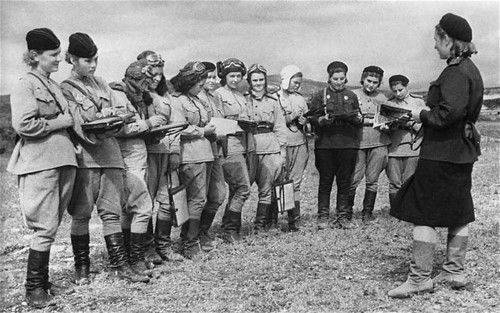
Raskova boldly assigned girls to command positions, taking into account both character traits and their abilities, and, of course, desire. Life itself was shown on how successfully Marina Mikhailovna selected pilots for leadership positions. Pupils Raskovoy with honor justified their confidence. E.D. Bershanskaya, for example, now a reserve colonel, commanded a regiment of night bombers and did an excellent job with the task. And the history of fighter aviation included the names of such squadron commanders and units as R. Belyaev, L. Khomyakova, V. Lisitsyna, T. Pamyatnykh, K. Budanov. They bravely and mercilessly beat the enemy, bravely, and confidently led their subordinates into battle. The squadron commanders Z. Timofeev, N. Fedutenko, K. Fomichev, and M. Dolin, L. Gubin, S. Krivonogov, drove their links perfectly proved themselves. And the navigators V. Kravchenko, G. Olkhovskaya, T. Zubkova, G. Dzhunkovskaya became snipers of bombing strikes.
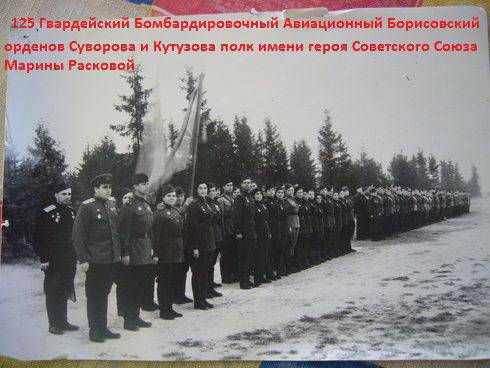
Marina Mikhailovna Raskova assumed command of the regiment of diving bomber. At the head of her regiment she led a squadron to the front. I must say that this regiment was already the third, which she prepared. Back in the spring of 1942, she headed the flight to the front of two other regiments - fighter and night bombers. The regiments were handed over to the command and participated in the battles until the very end of the war. On the fourth of January, 1943 of the year, when flying to the front at Stalingrad, the Pe-2 plane, which piloted Raskov, fell into the fog with snowfall and crashed.
The ashes of the legendary female pilot now rest in Red Square near the Kremlin wall, and its glorious deeds accomplished during the war and in peacetime have been an example for many generations of our country's aviators for many years.
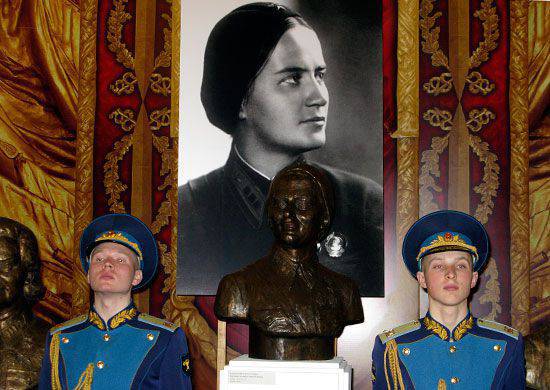
Sources:
Vitaly G., Polunina E., Khazanov D. Female faces of the air war // Avimaster. 2000. No.3. C. 6-7.
Kazarinova M. The Pilot of the Legend // Wings of the Motherland: Sat. articles. M .: DOSAAF USSR, 1983. C. 128-131.
Babakov A. Heroes of the Soviet Union. Tom.2. M .: Voenizdat, 1987. C. 345.
Raskova M. To the banks of the Amur. // Poem about wings: Sat. articles. M .: Contemporary. 1988. C. 213-220.
Kalashnikov B. Drama "Motherland" // Knowledge is power. 2008. No. 10. C. 92-99.
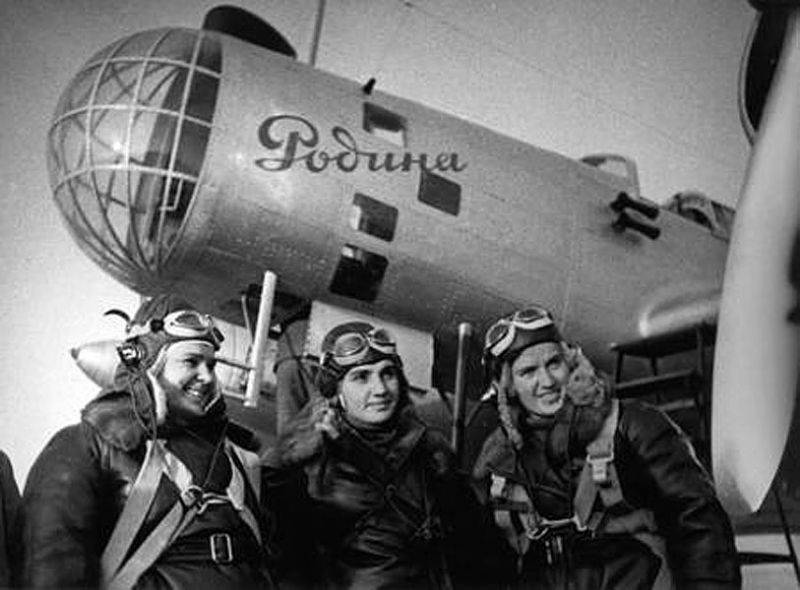
Information